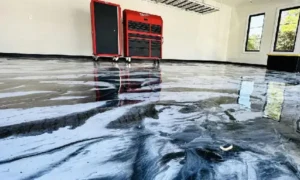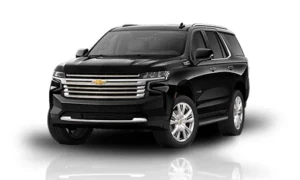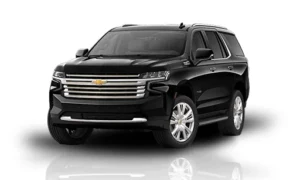Machine embroidery is a captivating craft that allows for the creation of intricate designs and personalized artwork on various fabrics. One of the essential elements of successful machine embroidery is choosing the right thread weight. Thread weight plays a significant role in determining the appearance, durability, and overall quality of the embroidered design. In this comprehensive guide, we will delve into the world of machine embroidery thread weights, exploring the different options available and providing valuable insights to help you make informed choices for your embroidery projects.
Understanding Thread Weight
Thread weight refers to the thickness or diameter of the thread, typically measured in denier or tex. The higher the thread weight number, the finer and thinner the thread, while lower weight numbers indicate thicker, heavier threads. Thread weight affects the density of stitches, the level of detail in the design, and the overall texture and appearance of the embroidery digitizing.
Common Thread Weights for Machine Embroidery
Machine embroidery threads come in a wide range of weights, each suitable for different types of projects and fabrics. Some of the most common thread weights used in machine embroidery include:
40 Weight Thread
40 weight thread is one of the most versatile thread weights for machine embroidery. It is slightly thicker than standard sewing thread, making it suitable for a wide range of embroidery designs and fabrics. 40 weight thread provides excellent coverage and stitch definition, making it ideal for bold, intricate designs on medium to heavyweight fabrics.
50 Weight Thread
50 weight thread is a lightweight thread commonly used for delicate embroidery work and fine details. It is thinner than 40 weight thread but still provides good coverage and stitch definition. 50 weight thread is ideal for lightweight fabrics, intricate designs, and projects where minimal thread buildup is desired.
60 Weight Thread
60 weight thread is an ultra-fine thread often used for micro embroidery, appliqué, and intricate lacework. It is the thinnest thread available for machine embroidery, allowing for exceptionally fine details and delicate stitching. 60 weight thread is best suited for lightweight fabrics and designs that require a high level of precision and detail.
Choosing the Right Thread Weight
Selecting the right thread weight for your machine embroidery project depends on several factors, including the type of fabric, the complexity of the design, and personal preference. Here are some guidelines to help you choose the appropriate thread weight for your embroidery projects:
Fabric Type
Consider the weight and density of the fabric when selecting thread weight. Heavier fabrics like denim and canvas may require thicker thread weights for better coverage and durability, while lightweight fabrics like silk and chiffon may benefit from finer thread weights to prevent puckering and distortion.
Design Complexity
The complexity of the embroidery design also influences the choice of thread weight. Intricate designs with fine details may require thinner thread weights to achieve crisp, precise stitching, while bold, geometric designs may benefit from thicker thread weights for enhanced coverage and definition.
Desired Effect
Consider the overall look and texture you want to achieve with your embroidery project. Finer thread weights create a more delicate, refined appearance, while thicker thread weights produce bolder, more pronounced stitching. Experiment with different thread weights to achieve the desired effect for your project.
Tips for Working with Different Thread Weights
Regardless of the thread weight you choose, there are some general tips to keep in mind when working with machine embroidery threads:
Tension Adjustment
Adjust the tension of your embroidery machine according to the thread weight being used. Thicker threads may require looser tension settings to prevent thread breakage and puckering, while finer threads may require tighter tension settings for better stitch definition.
Needle Selection
Choose the appropriate needle size and type for the thread weight and fabric. Thicker threads require larger needles with larger eyelets to accommodate the thread, while finer threads require smaller needles for smoother stitching. Use sharp needles for dense fabrics and ballpoint needles for knit fabrics to prevent snags and damage.
Experimentation
Don’t be afraid to experiment with different thread weights and combinations to achieve the desired results. Keep a thread sample book or chart on hand to reference when selecting threads for specific projects. Practice stitching on scrap fabric to test thread tension, stitch quality, and overall appearance before starting your embroidery project.
Conclusion
Choosing the right thread weight is essential for achieving high-quality results in machine embroidery. By understanding the characteristics of different thread weights and considering factors such as fabric type, design complexity, and desired effect, you can make informed decisions that enhance the beauty and durability of your embroidery projects. Experiment with different thread weights, techniques, and materials to unleash your creativity and elevate your machine embroidery to new heights of excellence.
Zdigitizing
We initially established our embroidery digitizing company in 2002, which later expanded to become a worldwide digitizing business. We have a highly-skilled digitizing team capable of handling even the most challenging and complex designs with precision for embroidery digitization.
Our pleasure is to be embroidery digitizers and give embroidery digitizing and vector art services to embroiderers and printers worldwide. Our customers provide us photos of their logos, and we convert them into embroidery formats for use on computerized embroidery machines.
When you interact with zdigitizing services, you can be sure that you’re working with experts who know what they are doing and how to do the project correctly.






























